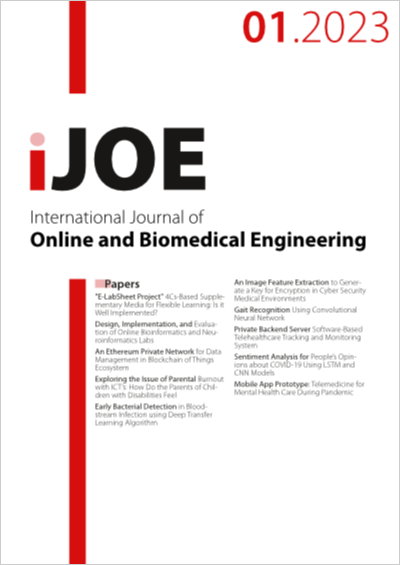"E-LabSheet Project" 4Cs-Based Supplementary Media for Flexible Learning: Is it Well Implemented?
DOI:
https://doi.org/10.3991/ijoe.v19i01.35523Keywords:
E-LabSheet, 4Cs, supplementary media, flexible learningAbstract
This research aims to design and develop a learning product named the "E-LabSheet Project." E-LabSheet is a supplement to the computer network practicum. This module contains the 4C's of 21st-century skills to practice critical thinking, problem-solving, creativity, communication, and collaboration, organized in materials, exercises, and assignments and integrated with the video tutorials. Furthermore, this E-LabSheet is very simple to use because it can be read with a mobile device, which has become the daily life of 21st-century students known as Gen Z. In this study, the validity, practicality, and effectiveness of the product were tested. The development model used is 4D. For the validity test, the validation sheet consists of media aspects and material aspects by experts. To find out the practicality, we used a questionnaire with a g-form which students then filled out as users. Trials were conducted on two classes to determine the effectiveness of the media. The first class (class A) was treated without E-LabSheet media, and the second class (class B) was treated by giving a supplement in the form of E-LabSheet. The results of this study stated that the developed e-LabSheet media was successfully categorized as valid, practical, and effective. This module is a complementary media for flexible learning that can improve student learning outcomes for the better, especially in 4C skills. The comparison of the learning outcomes of the two classes showed that class B, which was given supplementary media, obtained better learning outcomes than class A.
Downloads
Published
How to Cite
Issue
Section
License
Copyright (c) 2022 Agariadne Dwinggo Samala, Ika Parma Dewi, Lativa Mursyida

This work is licensed under a Creative Commons Attribution 4.0 International License.



